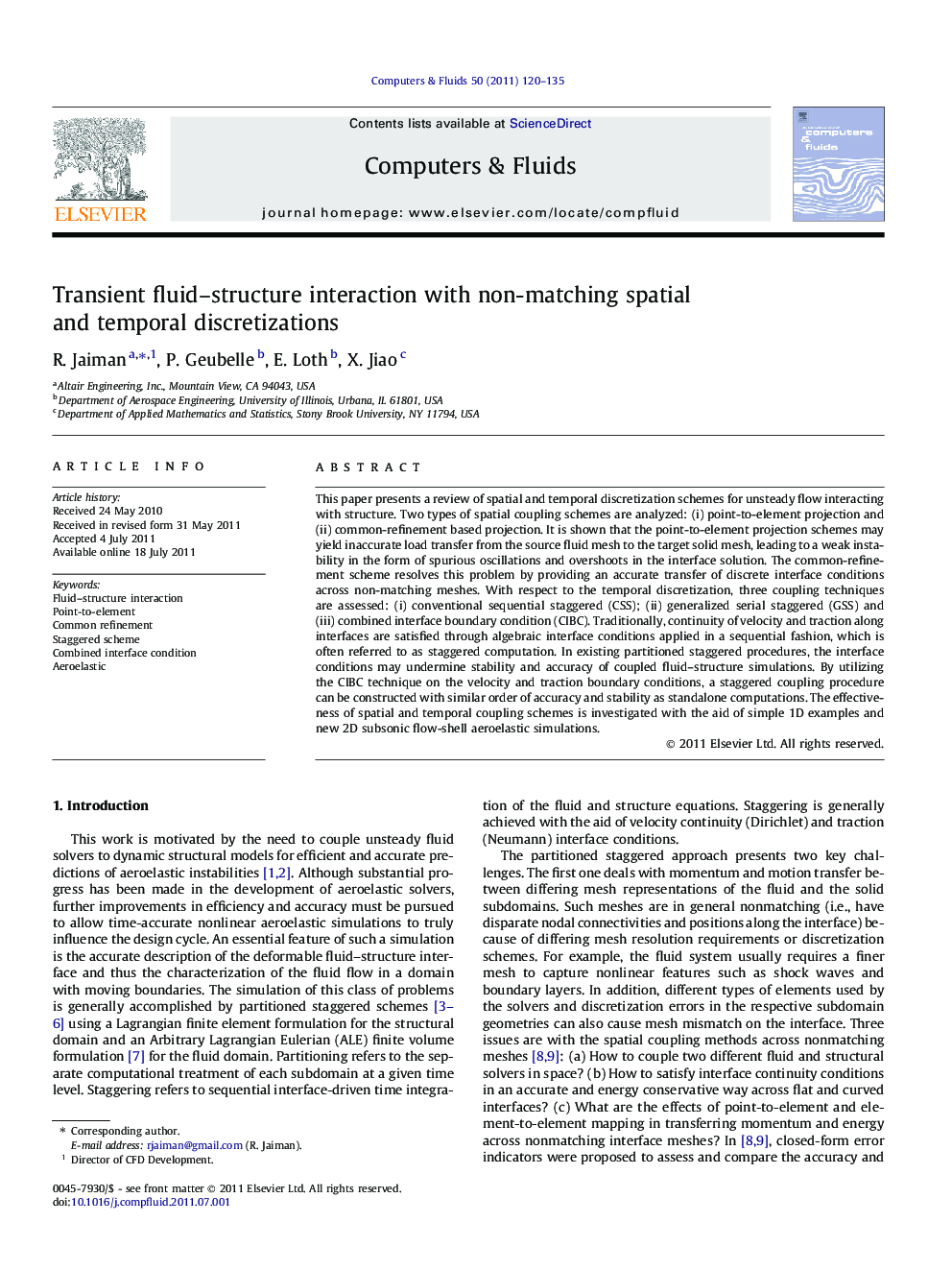| Article ID | Journal | Published Year | Pages | File Type |
|---|---|---|---|---|
| 762599 | Computers & Fluids | 2011 | 16 Pages |
This paper presents a review of spatial and temporal discretization schemes for unsteady flow interacting with structure. Two types of spatial coupling schemes are analyzed: (i) point-to-element projection and (ii) common-refinement based projection. It is shown that the point-to-element projection schemes may yield inaccurate load transfer from the source fluid mesh to the target solid mesh, leading to a weak instability in the form of spurious oscillations and overshoots in the interface solution. The common-refinement scheme resolves this problem by providing an accurate transfer of discrete interface conditions across non-matching meshes. With respect to the temporal discretization, three coupling techniques are assessed: (i) conventional sequential staggered (CSS); (ii) generalized serial staggered (GSS) and (iii) combined interface boundary condition (CIBC). Traditionally, continuity of velocity and traction along interfaces are satisfied through algebraic interface conditions applied in a sequential fashion, which is often referred to as staggered computation. In existing partitioned staggered procedures, the interface conditions may undermine stability and accuracy of coupled fluid–structure simulations. By utilizing the CIBC technique on the velocity and traction boundary conditions, a staggered coupling procedure can be constructed with similar order of accuracy and stability as standalone computations. The effectiveness of spatial and temporal coupling schemes is investigated with the aid of simple 1D examples and new 2D subsonic flow-shell aeroelastic simulations.
